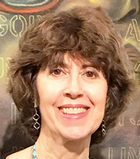The Climate Museum: Culture for Action

A recently released study by the Yale Program on Climate Change Communication showed that “70 percent of Americans are now very or somewhat worried about global warming.” The percentage of those “very worried” increased 10 points since March.
That leaves 30 percent who don’t yet comprehend the gravity of the situation—or aren’t willing to look at it. Count in members of Congress, who support the continuation of subsidies for oil and gas, but see no value in green infrastructure.
A key to shifting the equation is narrowing the gap between disseminating concrete scientific knowledge and civic action. Mix in the cultural gravitas of a museum setting, and you have the Climate Museum. Its tagline is #CultureforAction.
Currently, they have a hub located on Governors Island, New York, where they present exhibitions. Simultaneously, they are “scaling out to a permanent, year-round presence” in New York City.
Miranda Massie, previously a racial justice and labor rights lawyer, is the founder. Massie sees environmental justice as an essential part of the agenda. The mission statement outlines motivating “action on the climate crisis with programming across the arts and sciences that deepens understanding, builds connections, and advances just solutions.” The rationale is to engage a broad sector of people through exposure to the facts determined by scientists, a mash-up with art activism, and the individual role in influencing the conversation.
Eighty-five percent of the world’s population has experienced direct results of climate change (Massie was among those Manhattanites who went without electricity as a result of Superstorm Sandy).
The museum implements new approaches for examining the challenges of the climate crisis. The advisory board encompasses scientists, creatives, activists, business and museum professionals, guaranteeing that innovation is at the core of engagement philosophy.
On October 10, artist Gabriela Salazar created an event at Washington Square Park called “Low Relief for High Water.” It featured a sculpture cast from structural parts of her house. The material she used was water-soluble paper. Salazar described her purpose as a vehicle to open a discussion on “home, vulnerability, and collective responsibility.” In tandem, there was a range of activities geared to all ages.
Another visual interaction was the partnership with data journalist and illustrator Mona Chalabi. She conceived and designed “Beyond Lies,” a series of posters culled from aggregated stats and journalistic articles on how the fossil fuel industry has pedaled disinformation to obscure its role in the human factor of climate change.
Young people are rejecting their elders’ tired approaches and excuses (Think Greta Thunberg’s “Blah, Blah, Blah” quote at the Youth4Climate summit). The museum is building on the growing responsiveness of the upcoming generation and gets that the key to early engagement is empowering youngsters to play a role because their voices are essential. For the Taking Action exhibition, high school students served as on-site docents along with the gallery staff.
Project Climate Art for Congress is an example of that philosophy. It is divided into two groups: kindergarten to sixth grade and seventh grade to high school seniors. The objective is to receive letters from every state and American territory, which are then mailed to elected officials. (There is an Educator Toolkit that provides additional guidance.)
Younger children learn about climate issues, research their representatives, and create text and image messages. They submit their correspondence directly to the museum, which prints and forwards the letters to Washington, DC. The worksheet for those in grades 7 to 12 goes further, underscoring the power of individual political action. The Climate Action Leadership Program offers students throughout the country in grades 9 through 12 a channel into the world of climate activism. The past two years featured online high school internships.
The Climate Ambassador card is a well-designed solution for anyone at a loss for words to verbalize their concerns about the climate crisis trajectory. Just print out the wallet-sized card to start an exchange.. Talking points like the importance of “climate-forward voting” and “Doctors say the climate crisis is a public health emergency” are two of the options.
Via email, Director Massie wrote:
“We’ve seen a huge influx of youth leadership into the global climate movement in the last few years and, correspondingly, a surge of interest in our youth programs. Young people have profound moral clarity on the role the fossil fuel industry has played in the climate crisis and zero regard for business as usual; they are demanding systemic change. They also have profound moral authority – every week of delay on meaningful climate action means months of utterly unnecessary hardship in their future. Our programs look to amplify youth voices and to invite young people to mobilize their own agency and leadership capacity by speaking up in their families and communities and by sending messages to Congress about the climate impacts that matter to them the most.”
With its robust website, science education outreach, learning tools, climate justice teach-ins, and art projects, including neighborhood murals, the Climate Museum is on target to engage and tap into young people’s realization that action drives change.
Image: Courtesy of the Climate Museum
This article originally appeared on “Beyond Lies.



